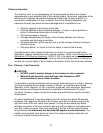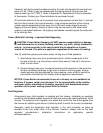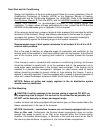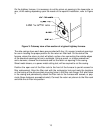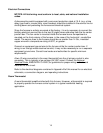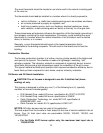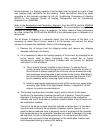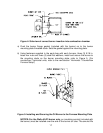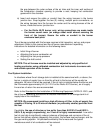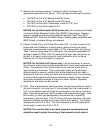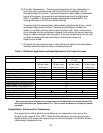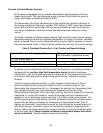
18
the gap between the outer surface of the air tube and the inner wall surface of
the combustion chamber opening to provide a seal, keeping hot combustion
gases within the chamber.
6) Insert and secure the cable or conduit from the wiring harness in the burner
junction box. Snap together the two (2) mating, multipin quick connections, on
the wiring harness from the furnace fan center and the wiring harness of the oil
burner, inside the burner junction box.
• For the Riello 40-F3 burner only, wiring connections are made inside
the burner sound cover (an orange sheet metal shroud covering the
front of the burner). Secure the cable or conduit to the burner
enclosure back plate.
The oil burner provided with this furnace requires initial inspection, set-up, and proper
adjustment. Refer to this manual and the oil burner manufacturer’s operating
instructions for detailed information on the following items.
• Initial firing of burner
• Adjusting the burner combustion air
• Adjusting the fuel pump pressure
• Setting the draft control
NOTICE: This oil furnace must be installed and adjusted by only qualified oil
heating contractor using calibrated combustion test instruments to ensure safe
and reliable operation of the furnace.
Fuel System Installation
In situations where the oil storage tank is installed at the same level with, or above, the
burner, a single oil supply line run from the oil tank to the burner will be usually be
adequate. No return line will be required. If the oil tank is installed below the burner and
the lift exceeds approximately 8-ft. (6-1/2 ft. for the Riello 40-F3 burner), an oil supply
line and an oil return line are recommended.
Refer to the
Standard for the Installation of Oil-Burning Equipment, NFPA 31-2001, and
the oil burner operating instructions for detailed information on oil storage tank & oil
supply/return line installation.
NOTICE: We recommend installing a high efficiency oil filter, in the oil supply line,
capable of filtering 10 to 20 micron diameter (or preferably smaller) particles from
the fuel.
If available, the use of ultra-low or low sulfur (less than 0.0015% S and 0.0015 -
0.05% S, by weight, respectively), no. 2 fuel oil is highly recommended. Low sulfur
fuel oil can help to significantly reduce instances of blockage and corrosion of the oil
burner fuel delivery system (especially the nozzle), the furnace heat exchanger, and the
flue gas venting system. Air pollutants emitted by the furnace and the typical
malodorous smell of oil combustion will be reduced.



